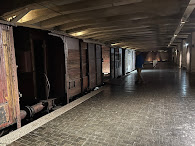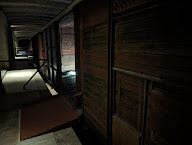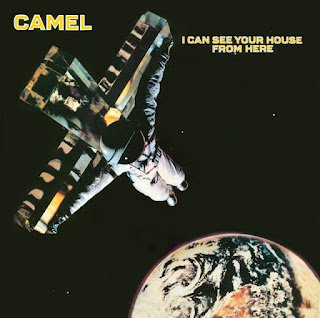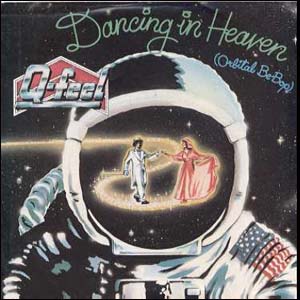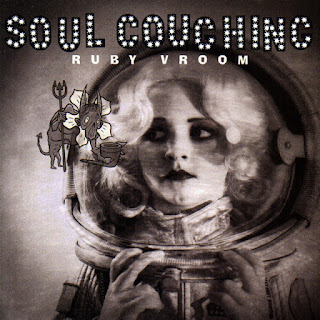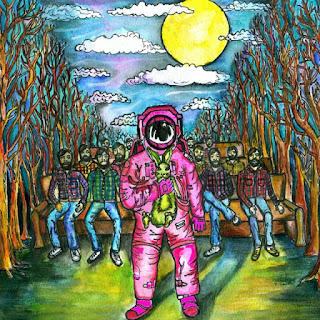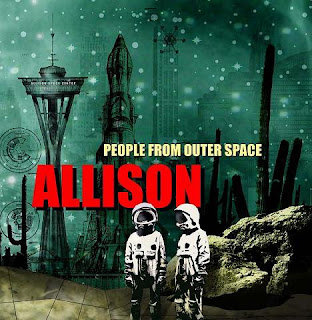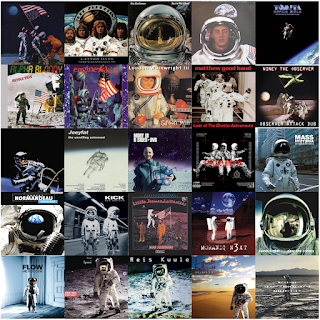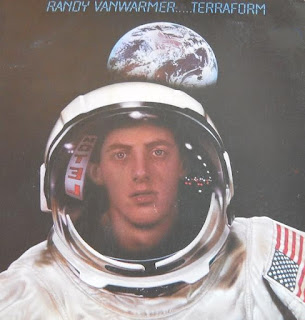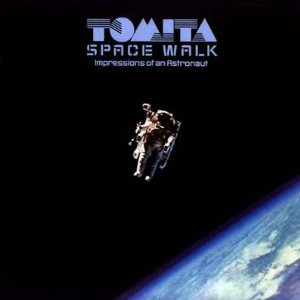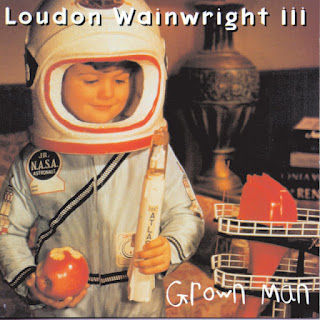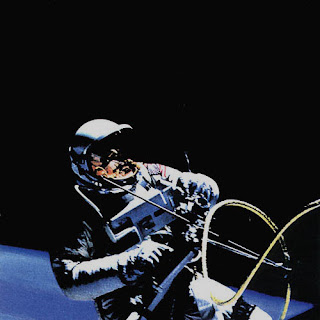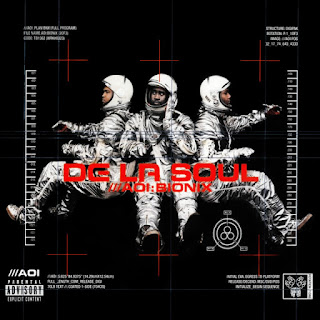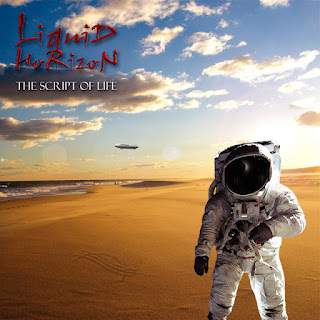

Left: A train leaves the Milan Central station at dusk.
Right: The "secret" loading platform where Jewish prisoners were deported to Auschwitz.
Overview
“Shoah” is a Hebrew word that literally means "catastrophe". It is specifically used to refer to the mass murder of nearly six million Jews in Europe by Nazi Germany and its collaborators during the Second World War. This term is more commonly used in English-speaking countries as “Holocaust”, which is Greek for "sacrifice by fire"
If you are standing at the big white Pistoletto apple titled “La Mela Reintegrata” (location) staring at the imposing-looking train station, you are standing in Piazza Duca d’Aosta. Start walking toward the station and go to the right and walk along the right side of the station. Pass the fast-food joints and bus stops. Keep the massive building on your left. Cross the Sottopasso Mortirolo. On your right, you’ll see a four columned Art Nouveau style building (the short lived ex-post office). It still has “POSTE” written on it. Finally, on your left, you’ll come to the Shoah Memorial. Likely, there will be guards out front.
How can a track be secret? Well, the loading of merchandise, mail, and tragically people happened below the main tracks, out of sight. Cars were loaded and then brought up to the main tracks with a large elevator and connected to a train. “The loading of deportees onto carriages took place in the early mornings to ensure secrecy and also prevent disruption of the vital daily mail and freight services.” [ref]. The efficiency of evil.
1938
The start of this dark period in Italian history can be traced to the 1938 “Manifesto of Race”. The manifesto, signed nonetheless by medical doctors and scientists, said basically that Italians were descendants of the Aryan race. No need to go into the rest and what it entailed but suffice it to say that the enactment of the manifesto resulted in severe discrimination against Jewish and North Africans (of the Italian colonial empire).
1,200 Jewish prisoners left on twenty trains from 1938 to 1943 from the tracks where the memorial is today. Most were brought to Auschwitz. Very few came back. The most prominent deportee who did return is Liliana Segre, the Italian Senator for life. She was deported in 1943.
Of the population of 38,994 Italian Jews, 7,172 were arrested and became victims of the Shoah. [ref]
It’s sobering, embarrassing, and maddening to think that people were treated like merchandise, mail, cattle. Loaded underground, in the off hours of the day, sent off to death. (And that’s not to mention the humiliation and torture leading up to deportation in places like the San Vittore prison.)
Yet, remembering that hasn’t always been easy in Italy. According to article A Wall of Indifference: Italy’s Shoah Memorial “...the culture of memory is slower in Italy than elsewhere in Europe, because even into the 1970s many Italians believed they were not really involved in the Holocaust; it was, instead, the evil work of German occupiers who invaded northern Italy after the fall of Mussolini. Italians pointed to the documented refusal of soldiers and citizens to participate in the Holocaust under Mussolini or to assist the Nazis after they invaded in 1943.”
The title of Michelangelo Pistoletto piece sitting in front of the station - “La Mela Reintegrata” (the apple made whole) represents “the entry into a new era, in which the artificial world and the natural world are reunited, generating an extended balance in society on a planetary scale.” That’s the official meaning. However, I can’t look at that stitched together apple and think about how we stitch together parts of history – like the deportation of Italian Jews – into a whole and try and make sense of it and make it presentable. And sometimes, make it seem like a Frankenstein creation of the past that can’t happen again. This is where we are very wrong.
Indifferenza
It’s not a good feeling to think of yourself as indifferent, but in fact, we are indifferent to many of today’s tragedies. Indifference is alive and good.
The museum is imbued in a gloom that is locked in time literally. The site remains as if waiting for its next load. The rumbling of trains above your head gives an eerie reminder that life goes on as normal (or tries to).
Center: Shoah Memorial - Place of Reflection.
Center: The observatory tunnel.
Right: Rail elevator system, where cars were lifted to track 21.
Milano Centrale is the main railway station of Milan, Italy. It was officially inaugurated on July 1, 1931, to replace the old central station, which was a transit station that could not handle the increased traffic caused by the opening of the Simplon Tunnel (connecting Switzerland to Italy) in 1906.
The station was designed and constructed by architect Ulisse Stacchini. The design of the building's facade was intended to showcase the dominance of then-Prime Minister Mussolini's fascist regime. You literally feel small in this building.
Entering into the station and accessing the platforms, binario (platform) 21 is located to the right. You can’t get the museum from the platform area, only from the external entrance.




Views of the Milan Central Station building, inside and out, with Michelangelo Pistoletto "La Mela Reintegrata" work in front.
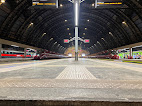



Various views of the Milan Central train shed.
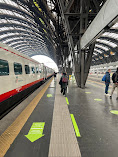

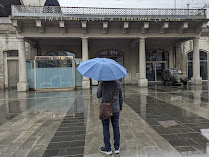
Left: Under the Milan Central Station train shed; passengers loading on a train.
Milano Centrale
The station was designed and constructed by architect Ulisse Stacchini. The design of the building's facade was intended to showcase the dominance of then-Prime Minister Mussolini's fascist regime. You literally feel small in this building.
Entering into the station and accessing the platforms, binario (platform) 21 is located to the right. You can’t get the museum from the platform area, only from the external entrance.




Views of the Milan Central Station building, inside and out, with Michelangelo Pistoletto "La Mela Reintegrata" work in front.




Various views of the Milan Central train shed.



Left: Under the Milan Central Station train shed; passengers loading on a train.
Center: Milan Central Station train shed at night from out on the platform.
Right: Outside view of the Shoah Memorial in Milan with an umbrella.
Right: Outside view of the Shoah Memorial in Milan with an umbrella.


